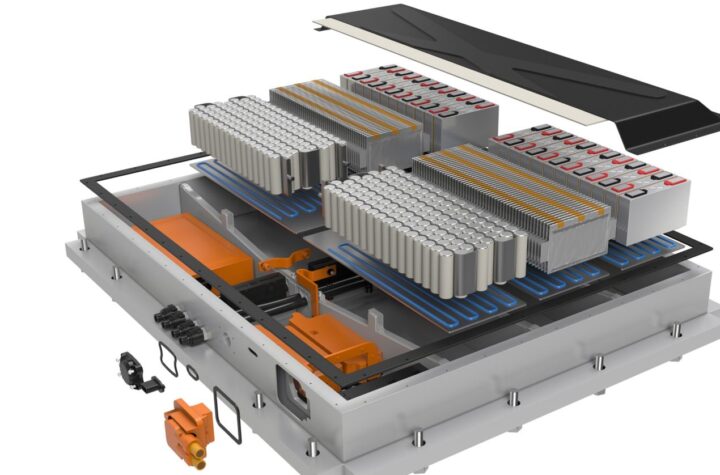

Advances in integrated sensor technology are freeing up system and vehicle designers from the constraints of having to work in only one or two dimensions.
One of the leaders in the field is Austrian firm austriamicrosystems, which has just released a number of new high-performance analog integrated circuits (ICs) for the automotive market. The company makes ICs for the automotive, consumer, communications, industrial and medical industries. It recently launched its first 3D Hall magnetic encoder family, called the AS54xx series.
According to austriamicrosystems, The AS54xx enables the first true 3-axis differential measurement of a magnetic field to cover absolute linear and off-/on-axis and three-dimensional tilt sensor applications. The new three-dimensional Hall element is able to provide absolute and highest resolution angular or linear output data. This new flexibility enables solutions for formerly unsolved sensing problems in industrial and automotive applications. The AS54xx series was developed in cooperation with Fraunhofer Institute for Integrated Circuits IIS in Germany – license holder of the HallinOne technology.
“3D Hall encoders use a different technology. Instead of measuring only one direction of the magnetic field, we are now measuring all three axes. So, with the right algorithm, we can use the three dimensions to do linear measurement, off-axis measurement (where the magnet does not have to be on top of the IC) and joystick applications. With the three dimensions, we can do whatever is required by the application with the same sensor array by just changing the post-processing,” said Bernd Gessner, General Manager Automotive, austriamicrosystems, in an earlier interview with AI.
Programming of the AS54xx’s internal EEPROM, enables the conversion of a wide range of geometries, including curved movements, non-linear scales, and tilted chip/magnet geometries, into a linear output signal. In order to achieve a perfectly linearized output of up to 0.5 % accuracy, the AS54xx position sensor provides an internal linearization table with 33 base points. All high reliability and high temperature EEPROM blocks are fully automotive qualified and are designed for harsh environments, making them ideal for designs in automotive, medical and industrial applications. Many products such as power metering systems, motor control units, engine management systems and many more will benefit from ultra high reliability over a wide temperature range up to 170°C by using a proven PMOS-based NVM technology, says the company.
Automotive Industries (AI) asked Gessner what makes the 3D Hall encoder unique?
Gessner: Our new 3D Hall encoders open a new chapter, a new dimension in position sensing systems. In the past, we have been limited to measuring just one axis of the magnetic field. Now, with a new core approach, which was developed together with the Fraunhofer Institute in Germany, we have maximum flexibility because we are able to measure all three axes of the magnetic field at the same time. For system designers, this eliminates many limitations. Because this new encoder covers absolute linear, on/off-axis as well as multi-axis tilt measurements, it can be used for different sensing applications. From a logistical perspective, this offers a huge benefit for sourcing. What we maintain from our existing portfolio of technology is our differential measurement technique to ensure high robustness as well as performance over high temperatures.
AI: What has the reaction been to the AS54xx from your automotive customers?
Gessner: The idea for such a product was more or less logical, because there was a clear need for it from our target and lead customers. For example, long distance linear measurement – up to 40 mm – is possible with our 3D Hall encoders, and opens up a completely new area of solutions. Several sensors can now be replaced by one single part. Some of the benefits include less board space, easier printed circuit board design, simplified communications and high reliability.
Another usage example would be a dashboard application. To combine rotation, tilt and push button functionality requires different kinds of sensor. With the 3D Hall device, one sensor is enough. So our customers start to realize what they can do with our new devices. Despite the fact that they can save board space and costs it is also possible to start the implementation of new applications.
AI: What are main applications your 3D Encoder was designed for?
Gessner: Our first target applications are any kind of long distance linear measurements like you can find for example in clutch applications, pedal applications or gear boxes. Second, we have a strong focus on on/off axis position sensors, like steering angle sensors or any kind of application where the access to the end of a shaft is limited. Last, but not least, we are focusing on multi-axis-tilt applications like joystick, navigation knobs and similar applications, where the measurement of all three axes is required. Since the devices are very flexible, we expect more applications to be developed over the next couple of years.
AI: Can you tell us about the AS5410, the 3D Hall encoder you introduced this June?
Gessner: The AS5410 linear position sensor is the first formally introduced product from the world’s first fully-featured 3D Hall platform. The unique 3D Hall sensor solution senses absolute position in automotive and industrial applications, and provides the highest resolution position information available. The AS5410 allows absolute position sensing of a simple two-pole magnet immediately after starting up the device, without the need for a prior reference run within the application. Position sensing is possible even with very small magnets: for example, a travel distance of 40 mm does not pose a problem for a small, 4 x 4 x 3 mm NeFeB (neodymium) magnet. Moreover, the 3D Hall solution’s output remains stable even when the device is subject to external stray magnetic fields. This feature is a worldwide first, and is the result of a special differential measurement architecture that includes several 3D Hall sensor elements. With four preset basic operating modes which are selectable via an SPI port, the AS5410 3D Hall encoder offers quick and easy configuration. All signal conditioning is on chip, including compensation for temperature effects.
The AS5410’s unique differential architecture makes it perfect for use in position sensing applications that include not only dust, dirt and moisture but also unwanted magnetic fields. The unique AS54xx family of 3D Hall magnetic encoder ICs is a fundamental addition to austriamicrosystems’ current magnetic sensor product portfolio with a focus on both the automotive and industrial markets. Beyond the AS5410, a portfolio of 3D Hall encoder products is being developed to operate up to 150°C and from a supply up to 18 V to address the needs of the most demanding applications.










More Stories
DuPont materials science advances next generation of EV batteries at The Battery Show
Cybord warns of dangers of the stability illusion
Avery Dennison PSA tapes support rapid evolution of EV batteries